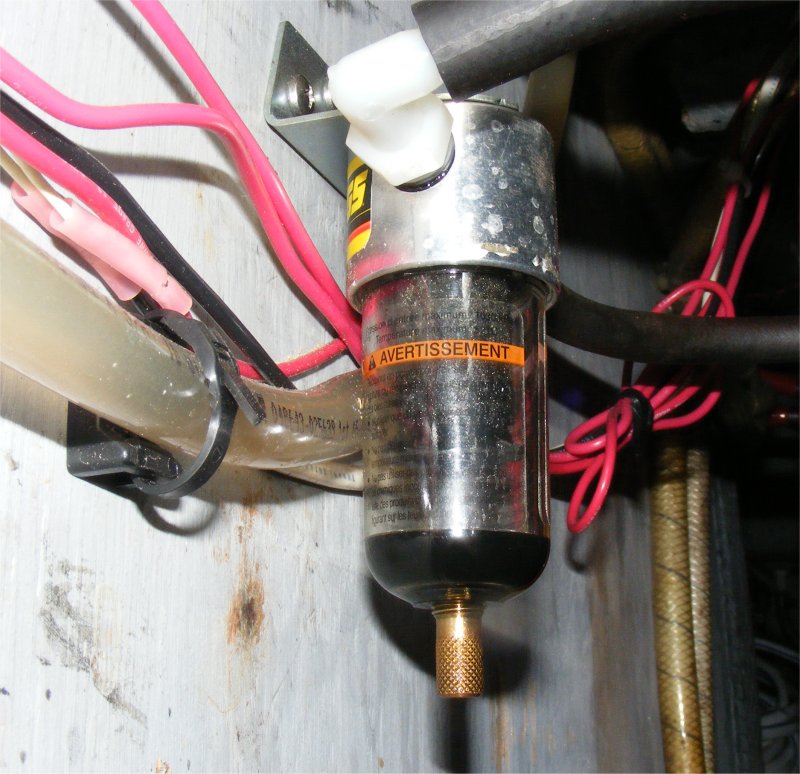I don't know if you've been following my sudden oil loss situation over on my forum but I have a question. I've gotten suggestions that the problem and it's sudden onset might be related to crankcase breather restriction.
The oil separator I installed at your suggestion had a bit more oil than usual in it when I did the oil change a day before but it was far from full. The element has turned oily and black but I assume that is normal since its job is to filter oil out of the flow.
I just pulled the hose off the crankcase nipple and tried to blow through it. I can just barely get air to go through. It seems consistent with what I would expect blowing through an oil soaked piece of foam but far from the pressure of an oil pump driven lube system.
Do you think this is significant or is it just a fact of life that a main crank seal that was installed in 1979 could now be failing?
There were no oil low pressure warnings while running the day after the oil change. The low pressure light and alarm went on for a couple seconds on start up which is unusual and prompted me to look at the dipstick and under the engine. The dipstick read half at that point. By the time TowboatUS arrived, the dipstick was dry. No engine operation during this time.
This is an engine that didn't burn more than a dipstick scratch mark line's worth between 50 - 80 hour oil changes. It had begun to burn about 1/8" but I've put about 800 hours on it since last July so I'm not surprised to start seeing a bit of oil burn in a 1979 engine,
The oil separator I installed at your suggestion had a bit more oil than usual in it when I did the oil change a day before but it was far from full. The element has turned oily and black but I assume that is normal since its job is to filter oil out of the flow.
I just pulled the hose off the crankcase nipple and tried to blow through it. I can just barely get air to go through. It seems consistent with what I would expect blowing through an oil soaked piece of foam but far from the pressure of an oil pump driven lube system.
Do you think this is significant or is it just a fact of life that a main crank seal that was installed in 1979 could now be failing?
There were no oil low pressure warnings while running the day after the oil change. The low pressure light and alarm went on for a couple seconds on start up which is unusual and prompted me to look at the dipstick and under the engine. The dipstick read half at that point. By the time TowboatUS arrived, the dipstick was dry. No engine operation during this time.
This is an engine that didn't burn more than a dipstick scratch mark line's worth between 50 - 80 hour oil changes. It had begun to burn about 1/8" but I've put about 800 hours on it since last July so I'm not surprised to start seeing a bit of oil burn in a 1979 engine,

